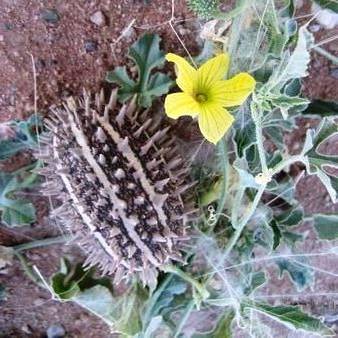
5 Cucumis africanus Seeds - Edible Wild Cucumber - South African Indigenous Vine - Global Shipping
Check my rate
| Main centres: | 1-3 business days |
| Regional areas: | 3-4 business days |
| Remote areas: | 3-5 business days |

| Main centres: | 1-3 business days |
| Regional areas: | 3-4 business days |
| Remote areas: | 3-5 business days |

Cucumis africanus Seeds
Wild Cucumber, Wild Gherkin; Wilde agurkie, Doringkomkommertjie

The fruits of this species, looking like small, prickly and striped cucumbers, were pickled and preserved in Old Cape kitchens. C. africanus is indigenous to Africa and occurs from the woodlands of Angola and Zimbabwe to Namibia, Botswana and South Africa. In South Africa it is found in Limpopo, North-West, Gauteng, Mpumalanga, KwaZulu-Natal, Northern, Western and Eastern Cape. It is rare in Mpumalanga, KwaZulu-Natal and the Eastern Cape. The genus name Cucumis is the Latin name for the cucumber which was already cultivated in Ancient Egypt. Cucumis is a genus of 32 species, indigenous mainly to Africa, also Asia, Australia and some islands in the Pacific. It includes two major commercial vegetable crops: C. sativus (cucumbers from Asia) and C. melo (melons from Africa and Australasia ), and two minor ones: the West Indian gherkin ( C. anguria ) and the kiwano ( C. metuliferus ). These last two species became cultivated crops outside their native Africa. The species name africanus refers to the natural distribution area of this plant. In South African traditional medicine the fruit, leaf or root of C. africanus is used as an emetic, purgative or enema for various ailments. The boiled leaf is used as a poultice. The plant has also been used as an animal medicine. The fresh young leaves are eaten as a pot herb by many rural people. The fruits have an overall nutrient composition slightly better than that of the cucumber and is sought after as a water source by the Khoisan of the Kalahari and in other dry areas. The non-bitter fruits of C. africanus have been pickled and preserved at the Cape since the late 17th century.
